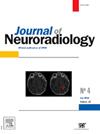Sleep deprivation as a risk factor for cortical gray matter reduction in new medical residents
IF 3.3
3区 医学
Q2 CLINICAL NEUROLOGY
引用次数: 0
Abstract
Background and purpose
Sleep is an essential physiological condition for the proper functioning of humans, both physiologically, cognitively, and psychologically. Sleep deprivation leads to a loss of psychomotor skills in humans. It is important to evaluate the structural changes experienced by medical residents who are sleep-deprived due to extensive work shifts, including night shifts, assigned during their training program. Therefore, the main outcome was to evaluate the structural changes in the cortical gray matter and the hippocampus assessed by brain magnetic resonance imaging (MRI) in newly admitted medical residents four months after the start of the medical specialty.
Material and methods
Forty-one newly admitted medical residents were enrolled, and an initial questionnaire was administered to assess sleep quality. All participants underwent a brain MRI study, utilizing an advanced MRI sequence: a 3D inversion recovery (IR)-prepped fast spoiled gradient-recalled (SPGR) high-resolution T1-weighted sequence. The images were then anonymized and reformatted, and volumetric analyses of gray matter and hippocampus were performed using an open-access platform for MRI brain analysis (volBrain). This process was repeated four months later with the acquisition of a new brain MRI study for each participant.
Results
For gray matter volume, a baseline value of 728.04 ± 63.95 cm³ and a final value of 715.11 ± 59.38 cm³ were found (p < 0.01), and the frontal lobe showed the greatest reduction, with an initial value of 181.92 ± 15.58 cm3 and a final volume of 176.45 ± 17.35 cm3 (p = <0.001). We found an OR of 1.52 (95 % CI 0.93–4.14, p = 0.01) between working night shifts and gray matter reduction.
Conclusions
The results of this study show a statistically significant reduction in gray matter volume in first-year residents after four months of shift work, with the greatest reduction in the frontal lobe.

睡眠剥夺是新住院医师皮质灰质减少的危险因素。
背景和目的:睡眠是人类生理、认知和心理正常运作的必要生理条件。睡眠不足会导致人类精神运动技能的丧失。重要的是评估由于在培训计划中分配的大量轮班(包括夜班)而导致睡眠不足的住院医师所经历的结构变化。因此,本研究的主要结果是评估在医学专业开始4个月后新住院医师的脑磁共振成像(MRI)评估的皮质灰质和海马的结构变化。材料与方法:纳入41名新住院医师,并进行初步问卷调查以评估睡眠质量。所有参与者都进行了脑部MRI研究,利用先进的MRI序列:3D反转恢复(IR)准备的快速破坏梯度回忆(SPGR)高分辨率t1加权序列。然后对图像进行匿名化和重新格式化,并使用开放获取的MRI脑分析平台(volBrain)对灰质和海马进行体积分析。四个月后,每个参与者都获得了新的大脑MRI研究,重复了这个过程。结果:灰质体积的基线值为728.04±63.95厘米³的最终值715.11±59.38厘米³被发现(p < 0.01),额叶显示最大的减少,一个初始值为181.92±15.58立方厘米和最终体积为176.45±17.35立方厘米(p = 结论:这项研究的结果显示显著减少灰质体积在一年级居民轮班工作四个月后,最大的减少额叶。
本文章由计算机程序翻译,如有差异,请以英文原文为准。
求助全文
约1分钟内获得全文
求助全文
来源期刊

Journal of Neuroradiology
医学-核医学
CiteScore
6.10
自引率
5.70%
发文量
142
审稿时长
6-12 weeks
期刊介绍:
The Journal of Neuroradiology is a peer-reviewed journal, publishing worldwide clinical and basic research in the field of diagnostic and Interventional neuroradiology, translational and molecular neuroimaging, and artificial intelligence in neuroradiology.
The Journal of Neuroradiology considers for publication articles, reviews, technical notes and letters to the editors (correspondence section), provided that the methodology and scientific content are of high quality, and that the results will have substantial clinical impact and/or physiological importance.
 求助内容:
求助内容: 应助结果提醒方式:
应助结果提醒方式:


